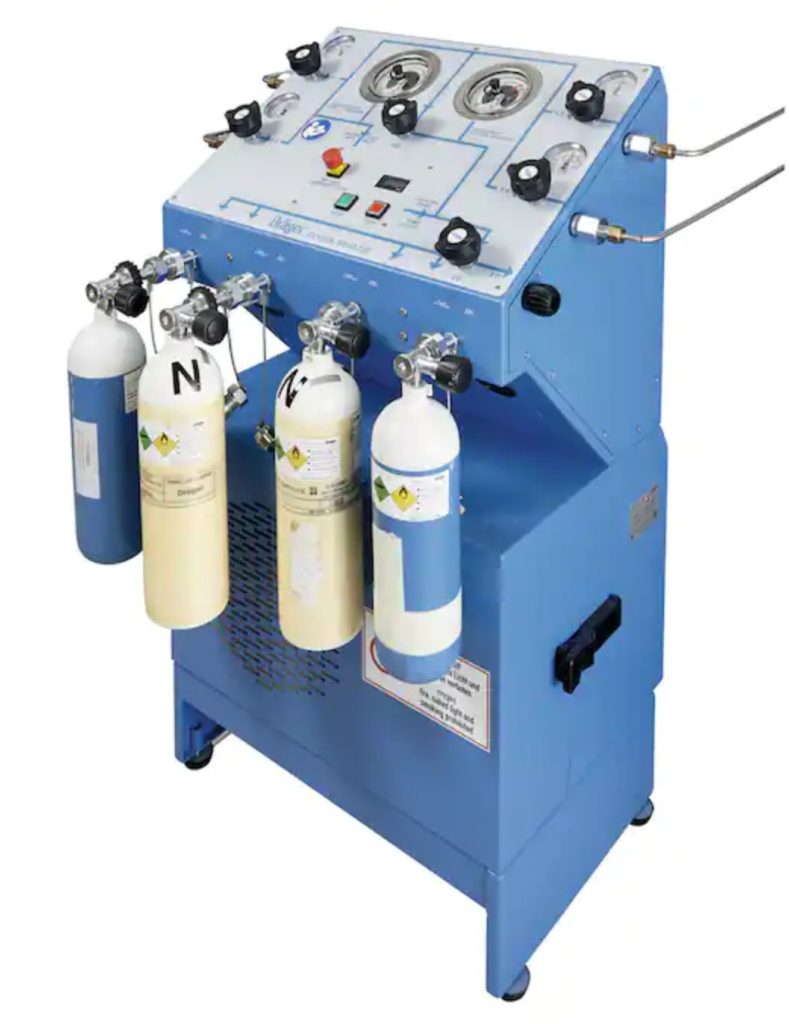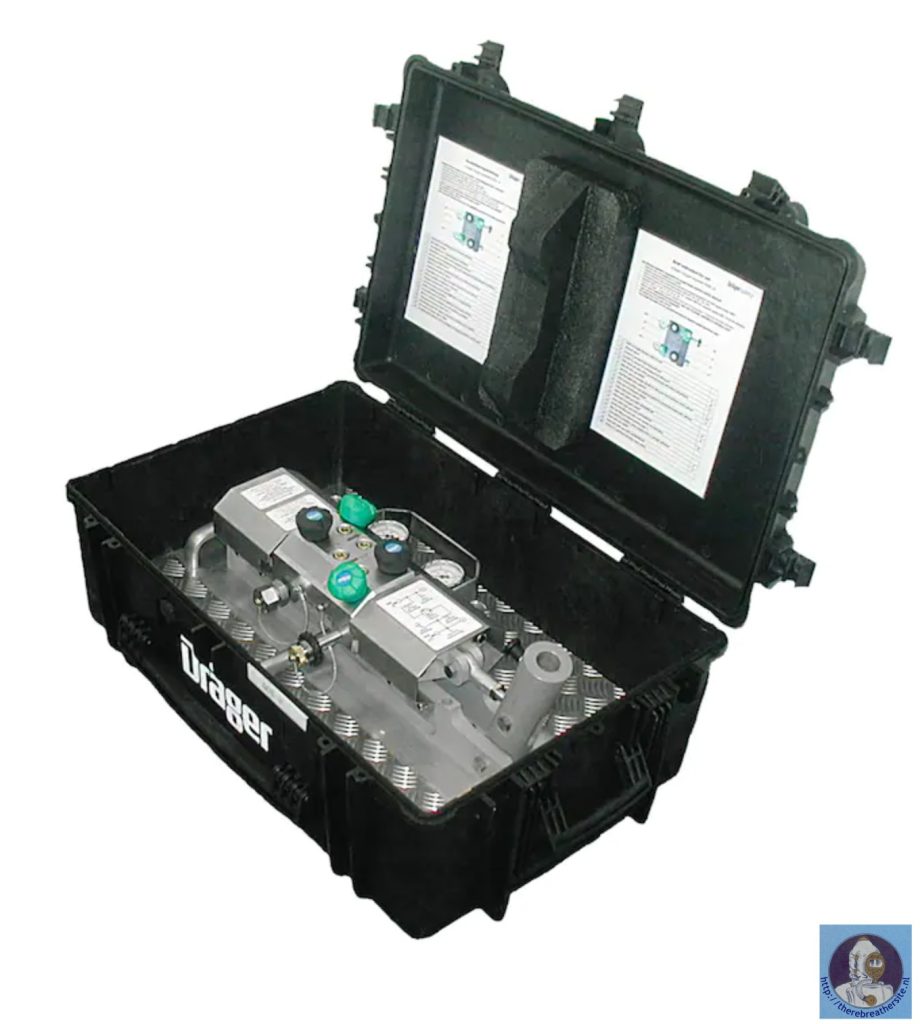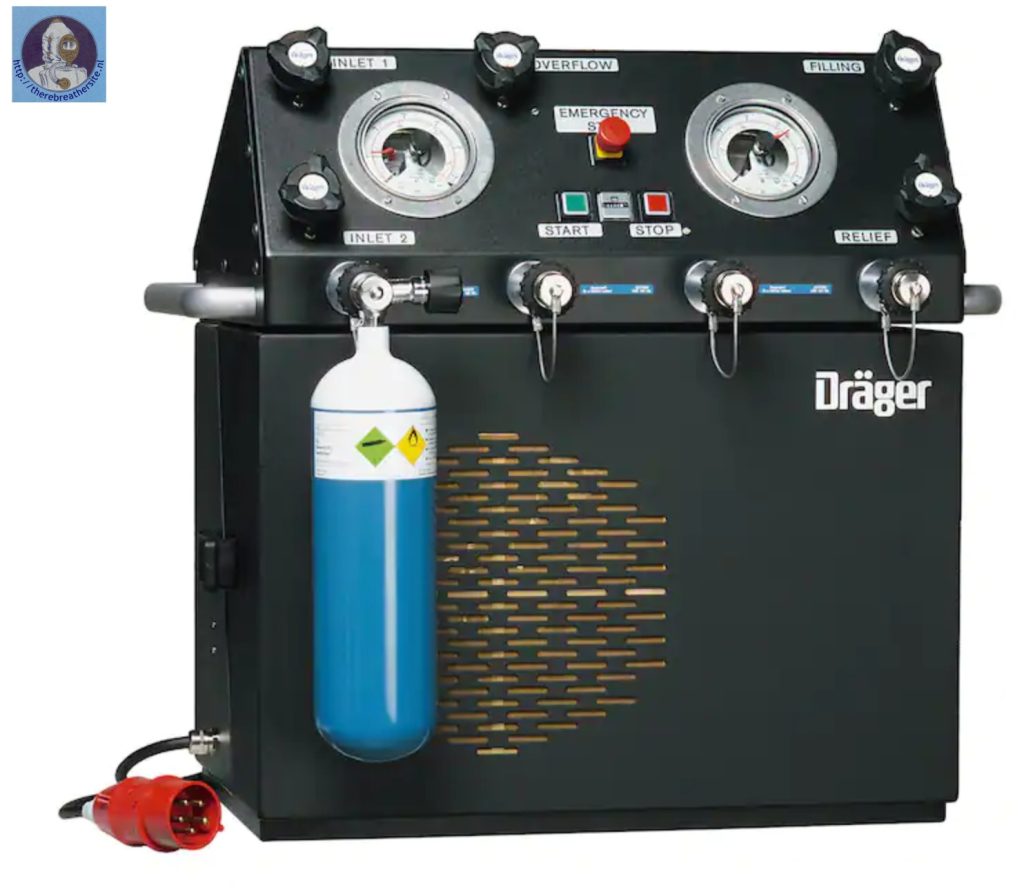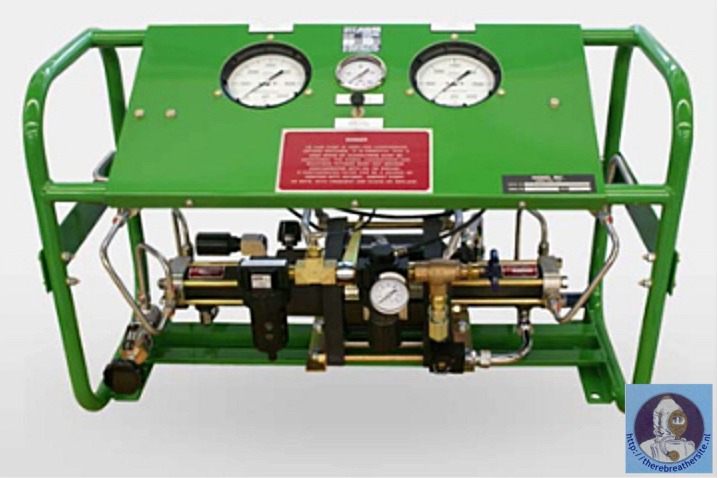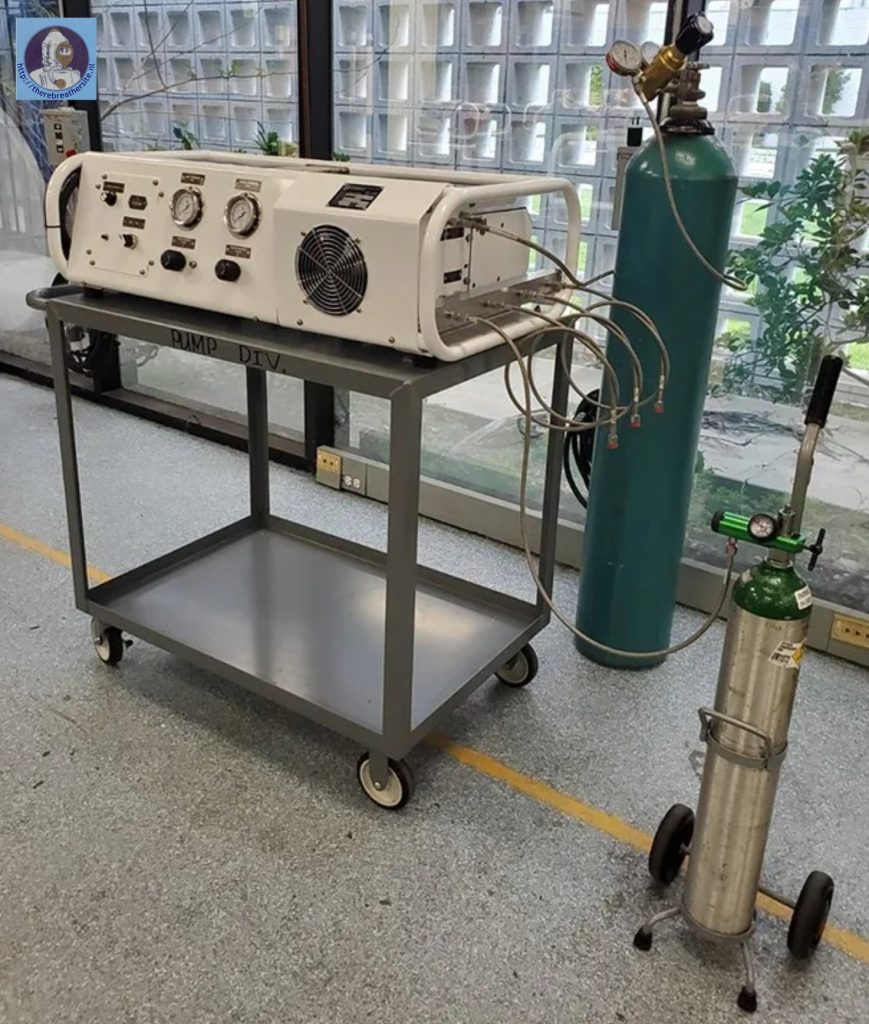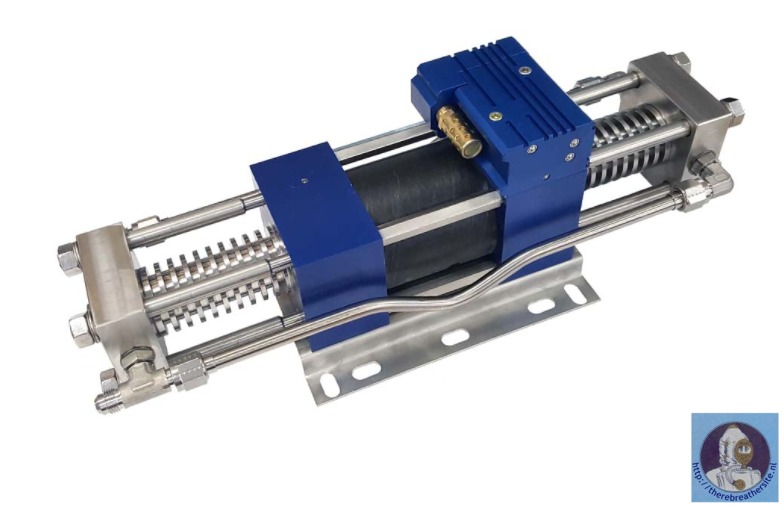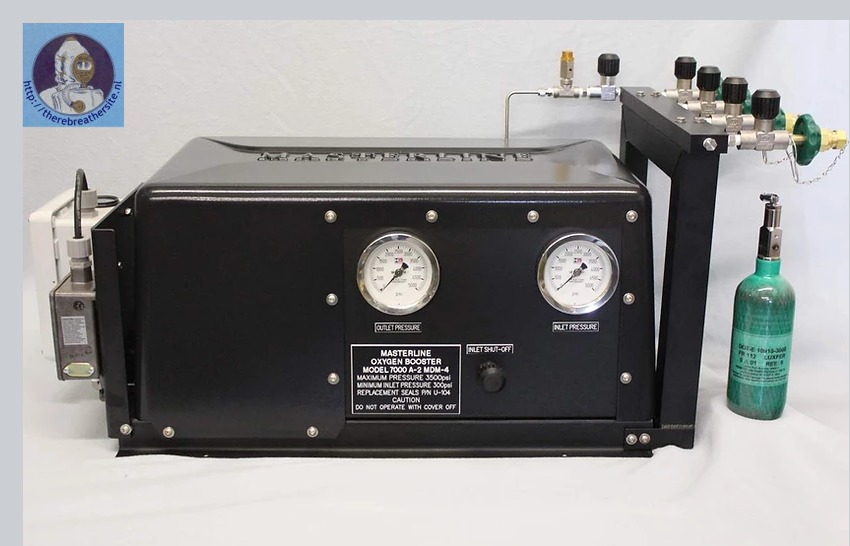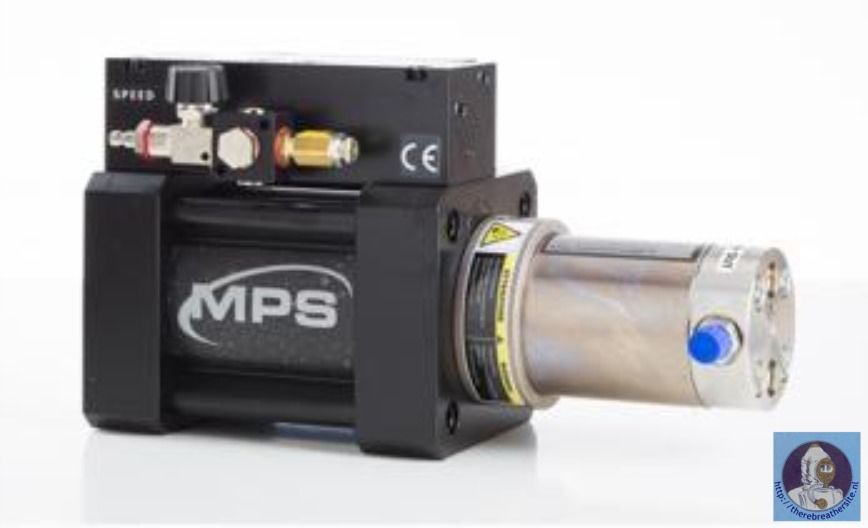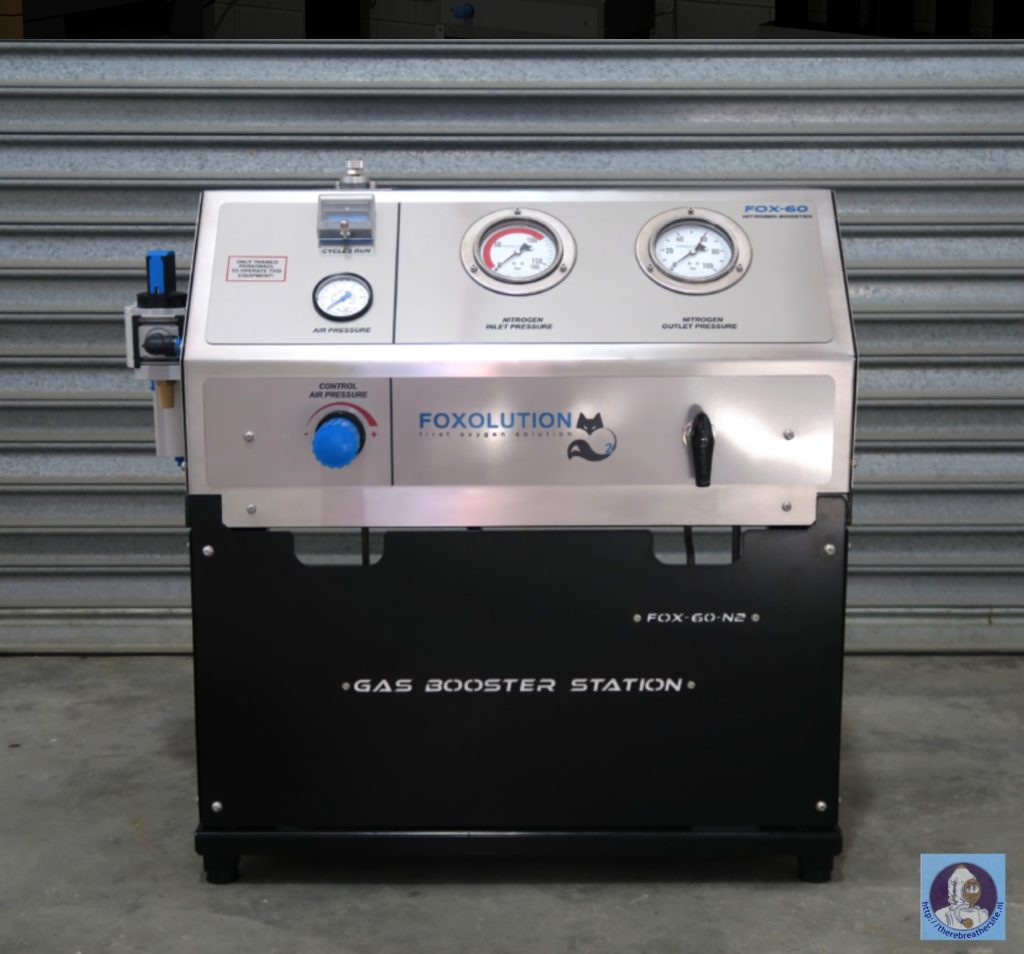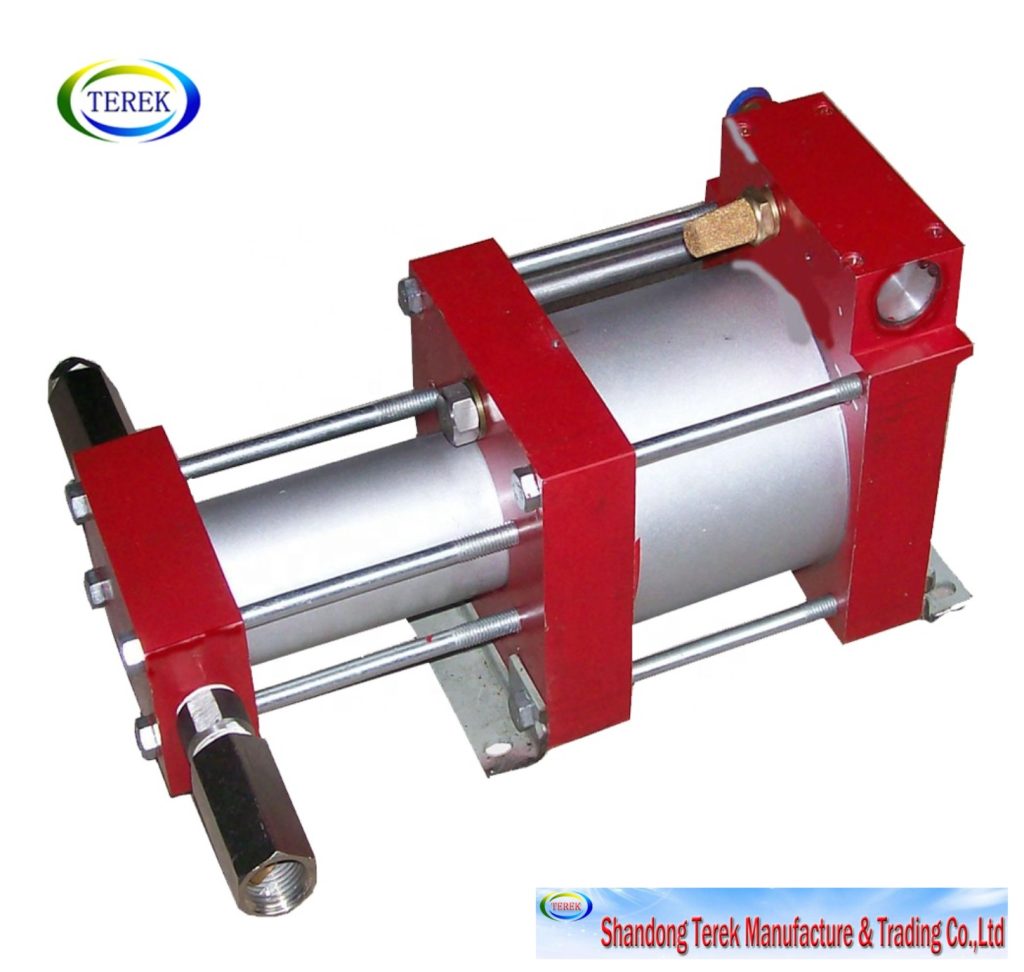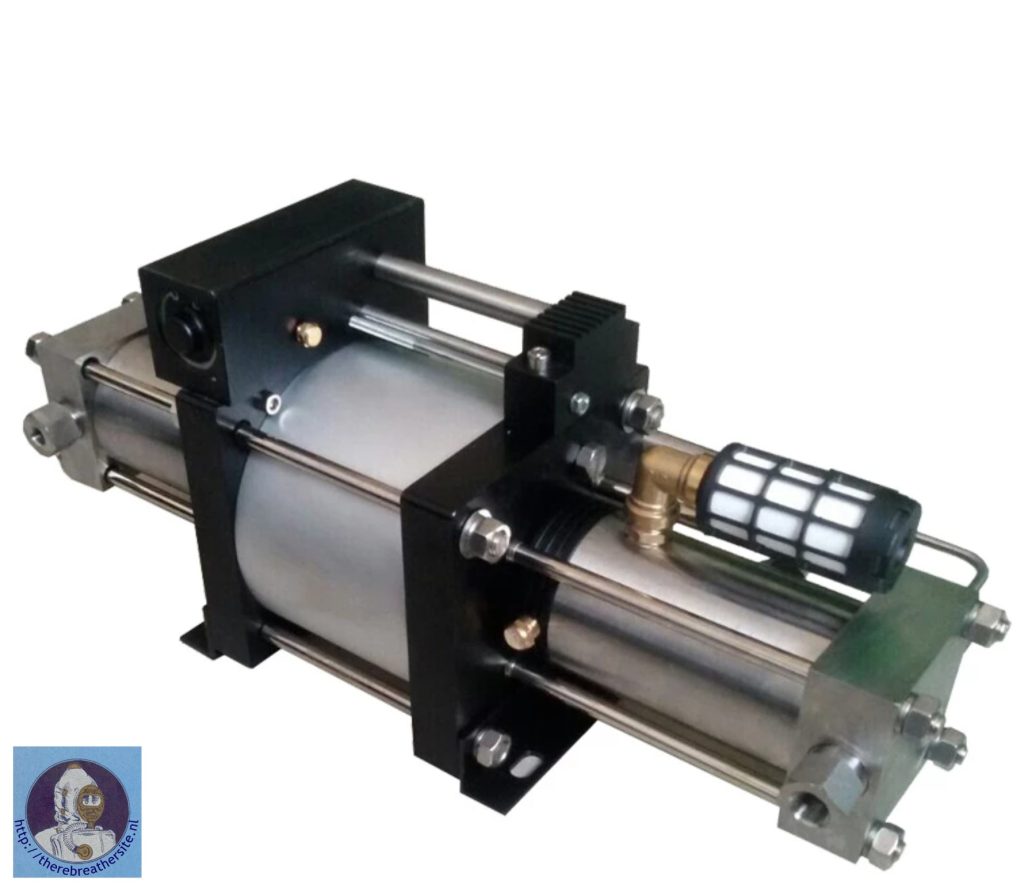Technical information about oxygen gasboosters
Therebreathersite sells and services boosters to compress gases since 2003. As a dealer for Maximator for the Benelux a very wide range of boosters is available. Through 20 years of experience with the use of boosters in the diving industry therebreathersite can advise and supply you with the best possible solution. Are you looking for a simple air powered booster to fill 3 litre cylinders at home or a larger system for your dive shop, we are happy to advise you. Previous deliveries to tech divers around the world can confirm that we only supply the best materials for this critical application. We also construct and deliver large systems for army and navy.
What’s a gas booster?
The purpose of a gas booster is to pump a gas from a storage cylinder to another, usually smaller cylinder, thereby increasing the pressure. In diving, the most commonly used gases are air, oxygen, nitrox, helium and argon. The gases are often delivered in 50 litre cylinders with a pressure of 200 or 300 bar. If smaller cylinders are filled from these cylinders, the pressure in the supply cylinder will quickly drop to a level where the desired final pressure can no longer be achieved. If we now place a booster between the storage cylinder and the flex to be filled, it can increase the pressure to the desired level. The booster, of course, needs energy to increase the pressure. This energy can be supplied in three common ways. By manual power in places where there is no compressed air or electricity, by compressed air drive or by the less common electric drive. For recreational divers, a compressed air drive is usually chosen. For industrial applications, an electrically driven booster is used. Cave divers who often have to carry their equipment often choose a manual drive as this prevents the loss of valuable breathing gas.
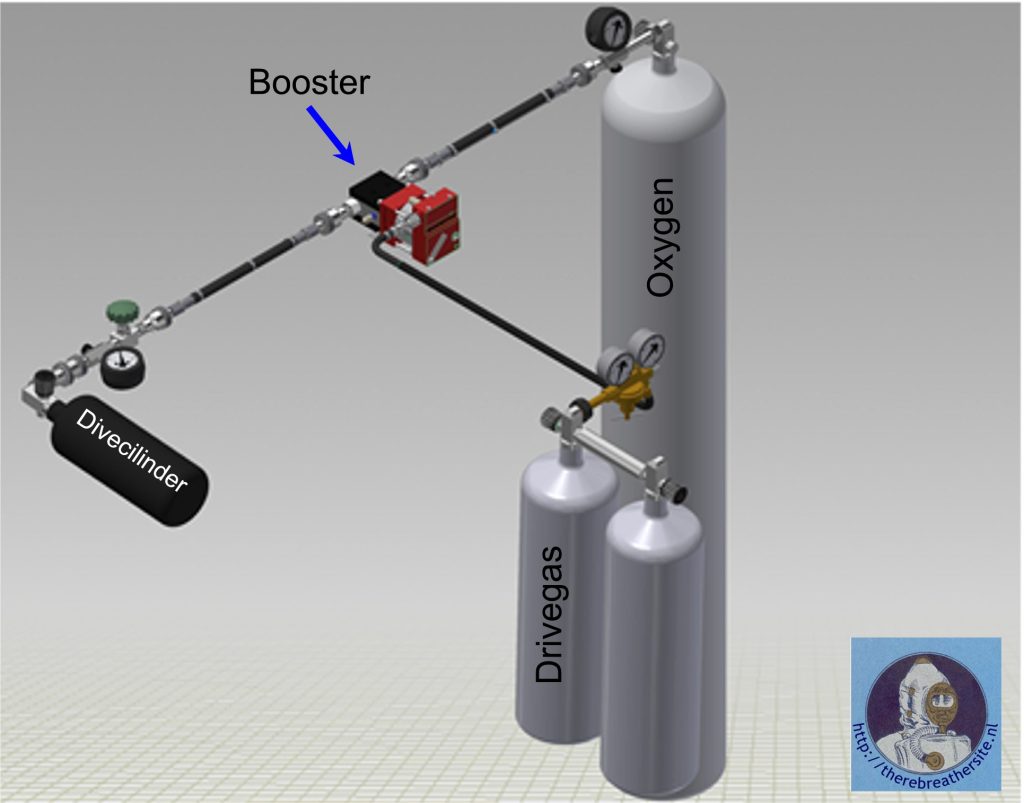
How do I choose a gas booster?
For technical diving or blending, the following are important:
Which gas needs to be compressed?
What is the volume of the cylinder to be filled?
How many cylinders need to be filled at once (boat, diving school)?
What final pressure is to be achieved?
What is used to drive the booster?
Is my compressor suitable to drive the booster?
What are the connections to the cylinders?
All these questions are important for the choice of the booster. A booster used for oxygen cannot be used afterwards for a compressed air system with an oil lubricated compressor. For boosters used to compress high pressure oxygen, all seals must be suitable for oxygen. A small booster can be driven by a 12 litre bottle or a double ten, but if a compressor is used it must have a pressure of at least 8-10 bar and an effective volume of 250 l/min.
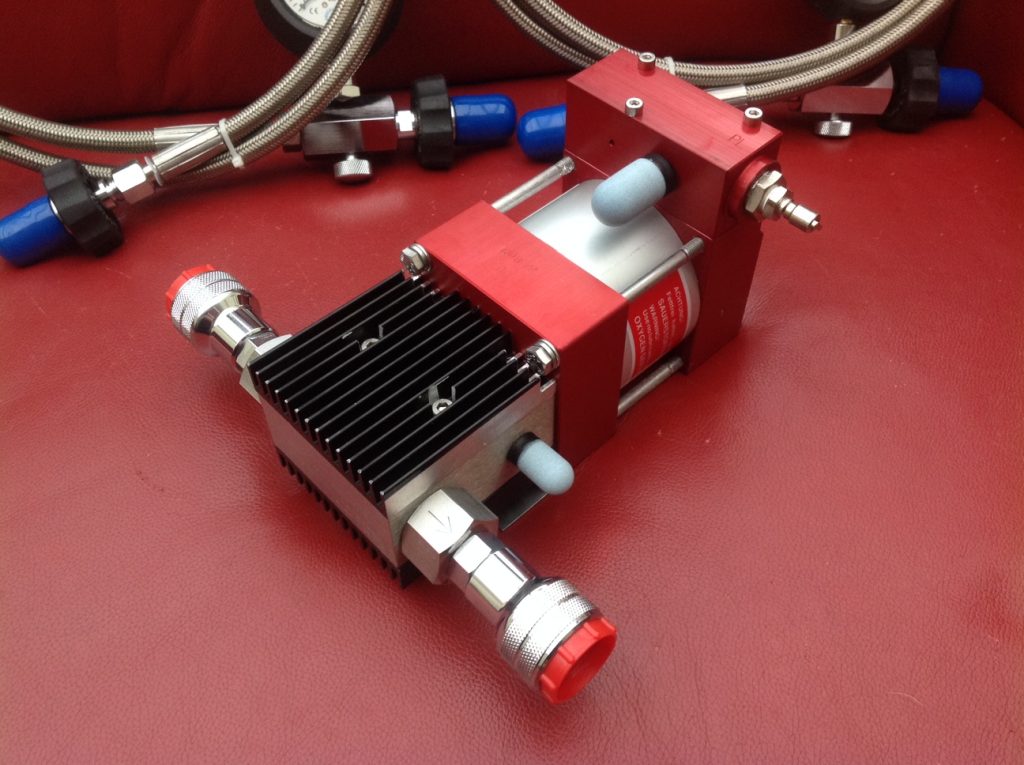
Boosters are distinguished by single-acting and double-acting systems. The ROB 22 is a single acting booster with a final pressure of 280 bar. In practice, however, a pressure higher than 250 bar will rarely be reached because common diving systems are approved for a working pressure up to 230 bar. When diving with 300 bar cylinders, a two-stage booster must be used. The pressure will be increased in two steps to, for example, 320 bar.
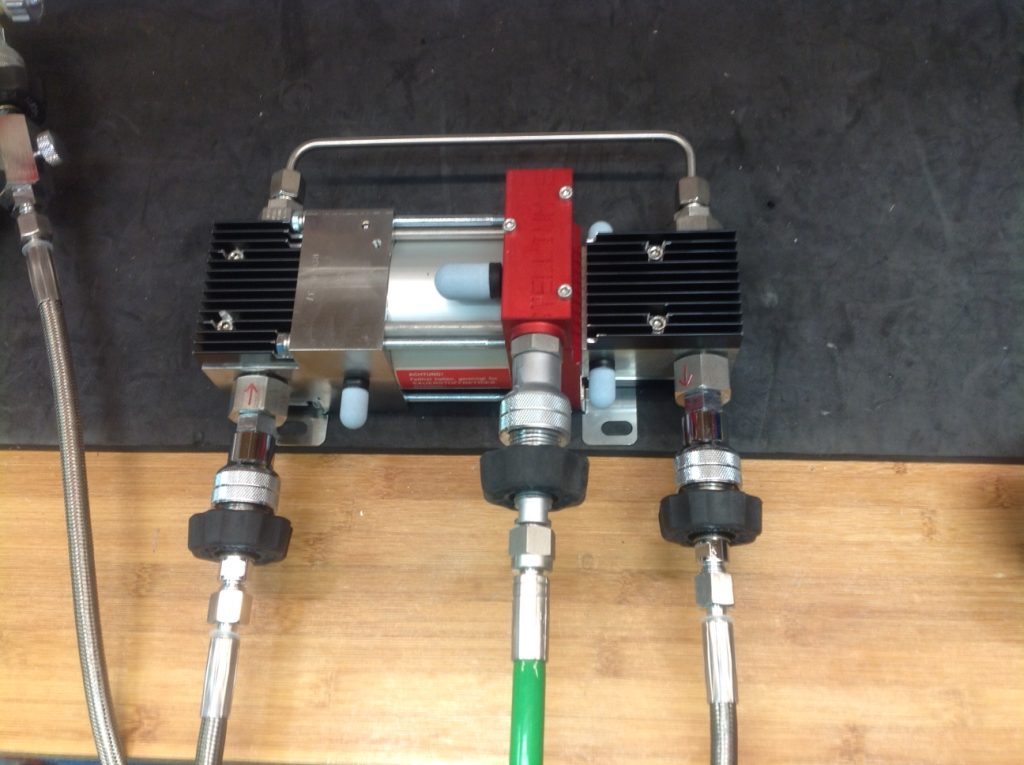
INTERMEZZO
Hieronder zie je de drie meest gebruikte configuraties waarbij de eerste een eenvoudige enkelwerkende booster toont die vaak met veerdruk de lagedrukzuiger terugdrukt naar de uitgangspostie. Perslucht drukt telkens de zuiger met de piston in de T-vormige gaskamer waarbij kleppen het gas in 1 richting forceren.
Een tweede type wordt gebruikt om gelijke drukken te behalen alleen met een grotere opbrengst omdat er twee kamers zijn waar het gas wordt gecomprimeerd.
De derde variant perst het gas van de ene naar de volgende gaskamer om op deze wijze een hogere einddruk te bereiken!
If larger volume applications require a booster, a booster with a larger volume is usually chosen. The gas displacement can be adjusted as required. Systems can easily achieve the desired final pressure for diving applications, as pressures up to 7,000 bar are possible in this industry!
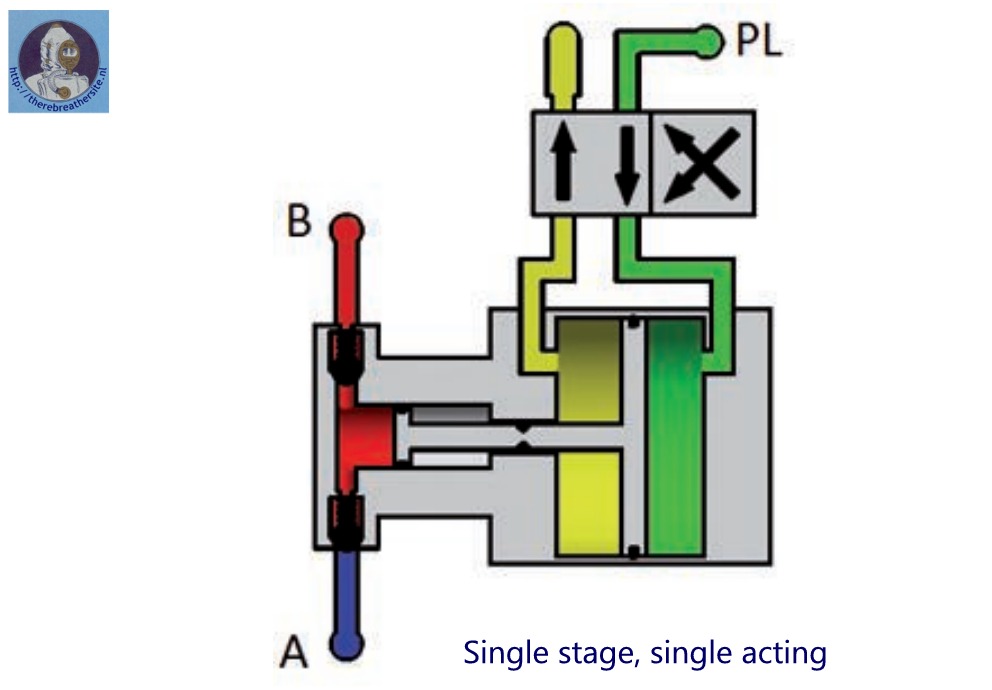
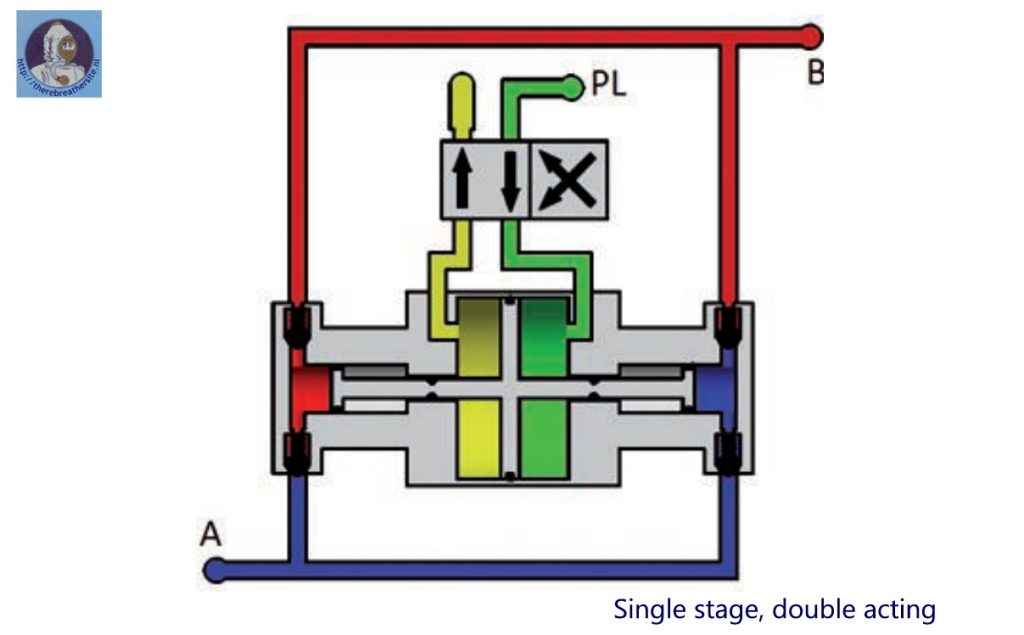
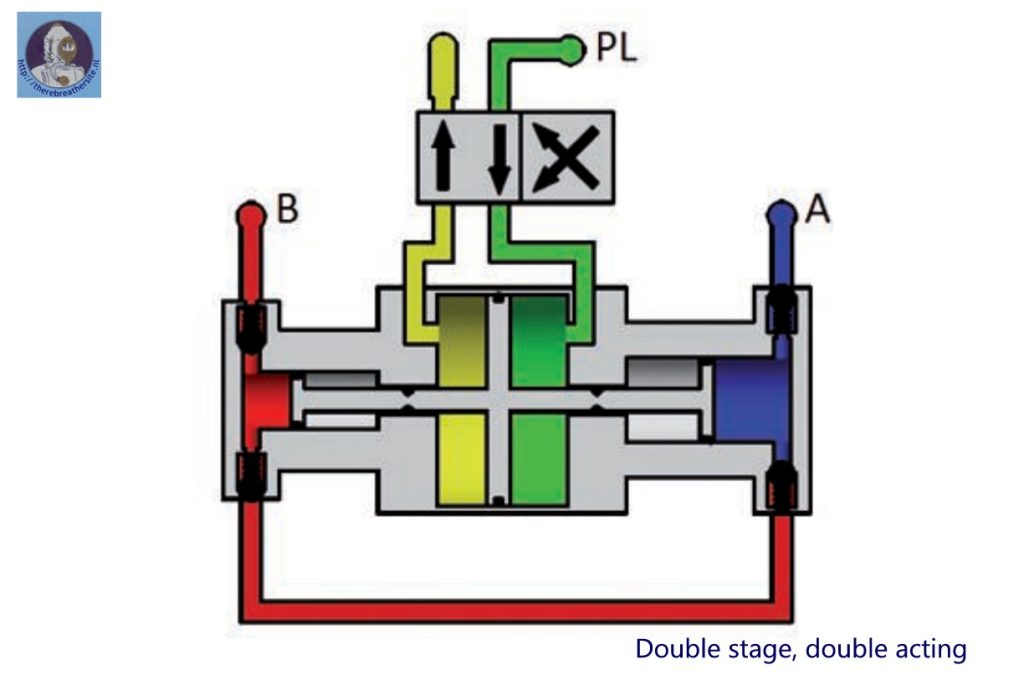
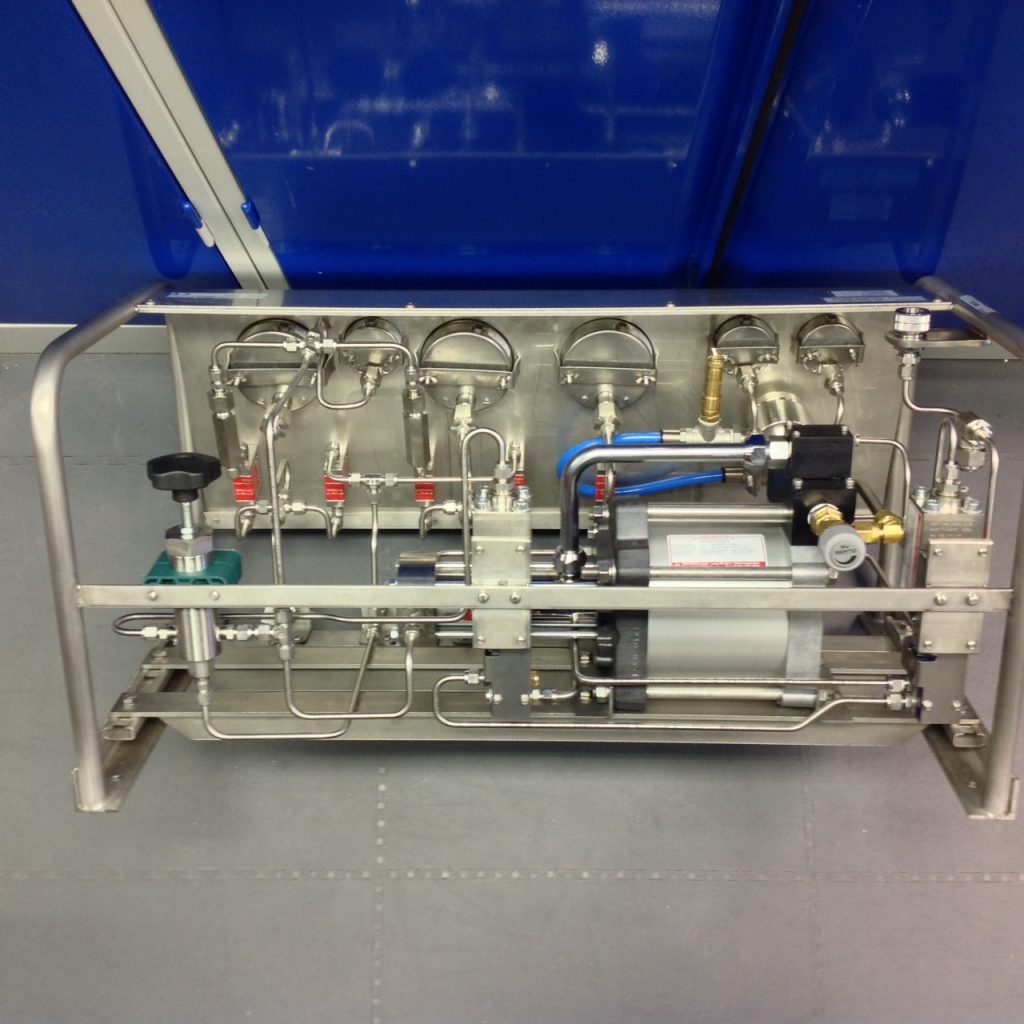
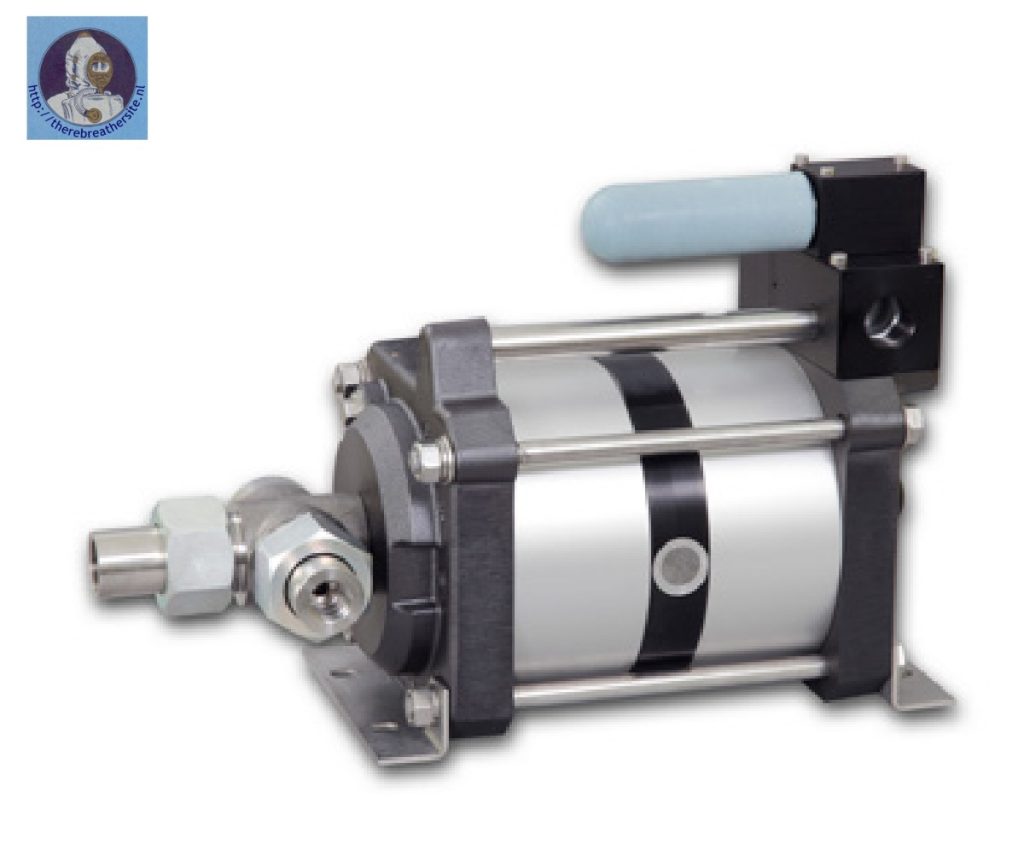
Maintenance is also an important consideration. Boosters are particularly sensitive to dirt and contamination. Especially boosters for the use of oxygen need to be installed in a clean-room after special cleaning techniques. Therebreathersite has facilities to clean, service and repair small Maximator boosters.
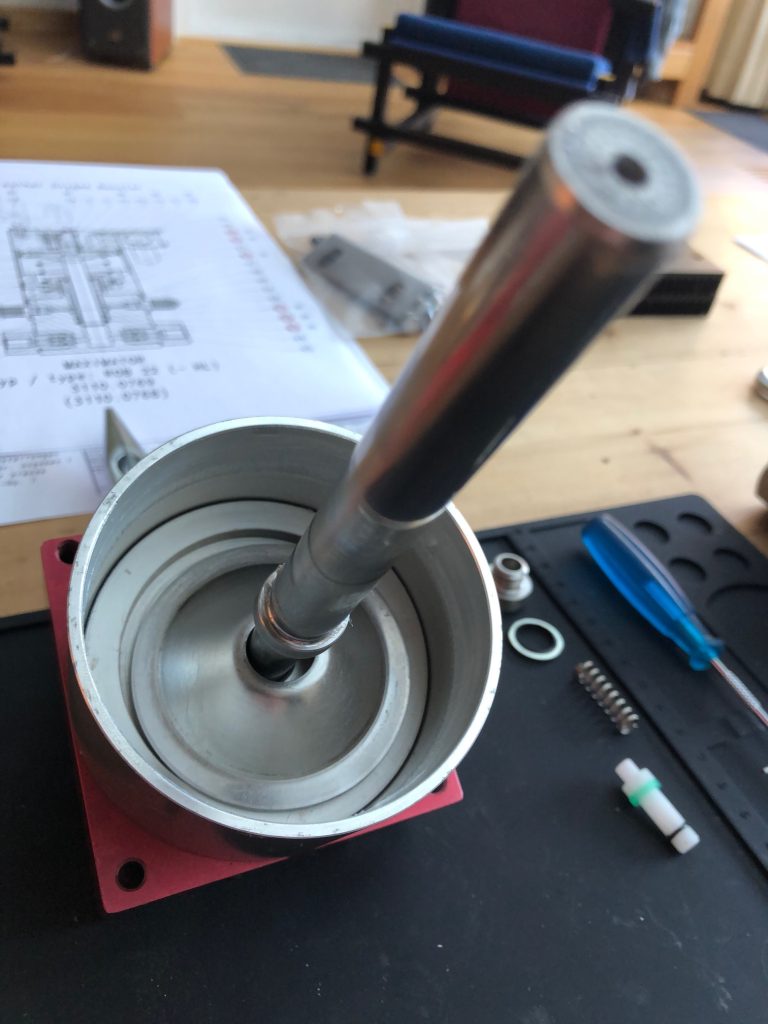
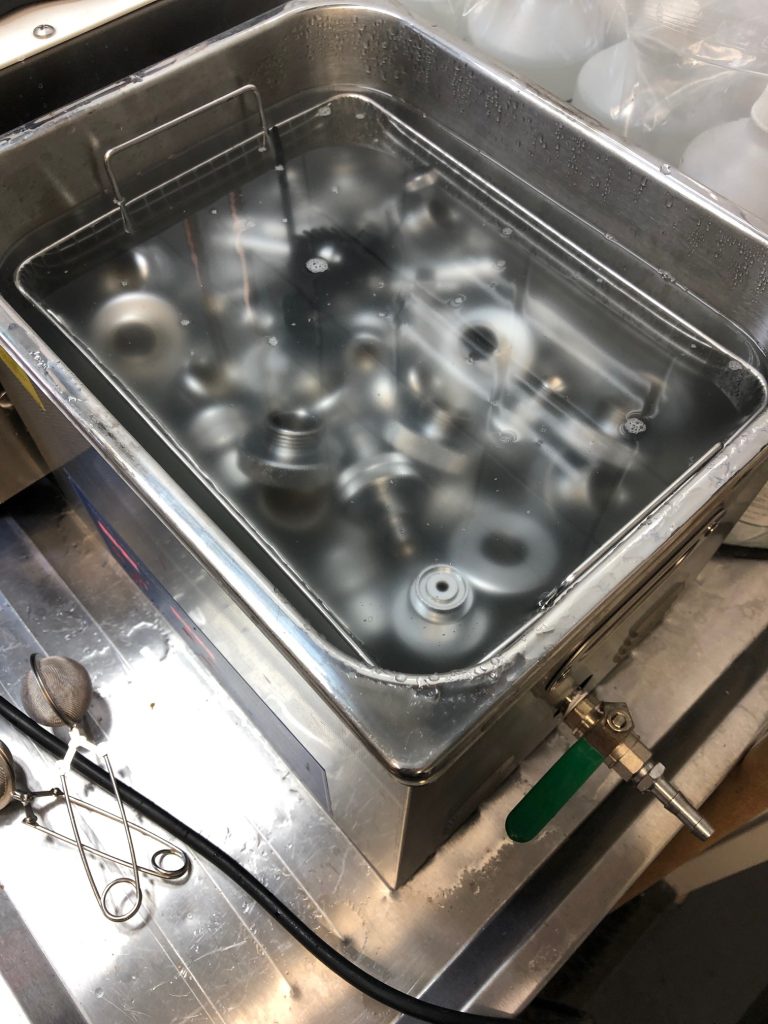
If you want an advice for the purchase of your booster, send an email to therebreathersite. We can help you to make the right choice and to compose the booster for you. In collaboration with Maximator, a very wide range is available.
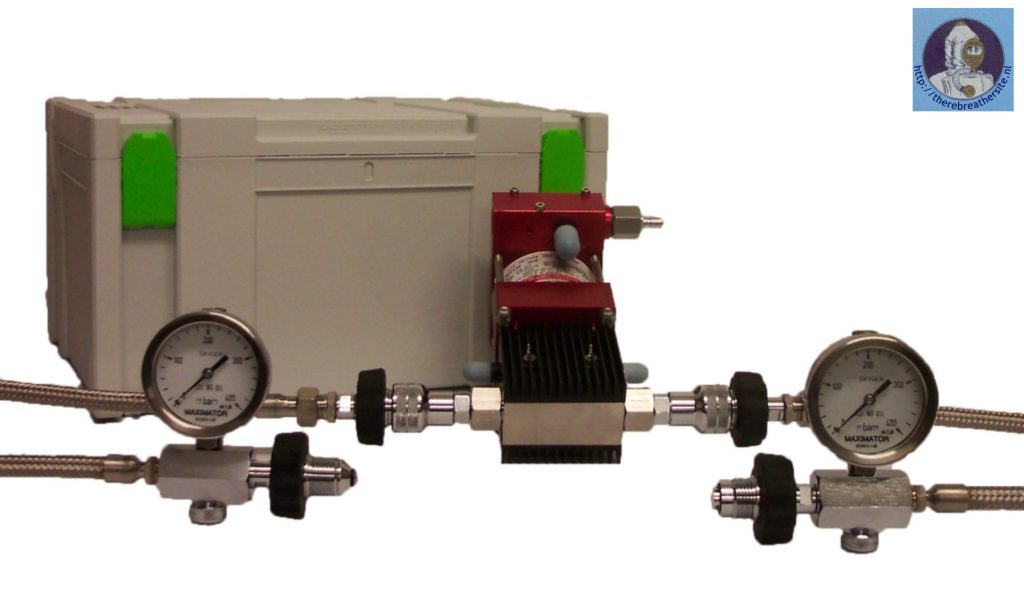
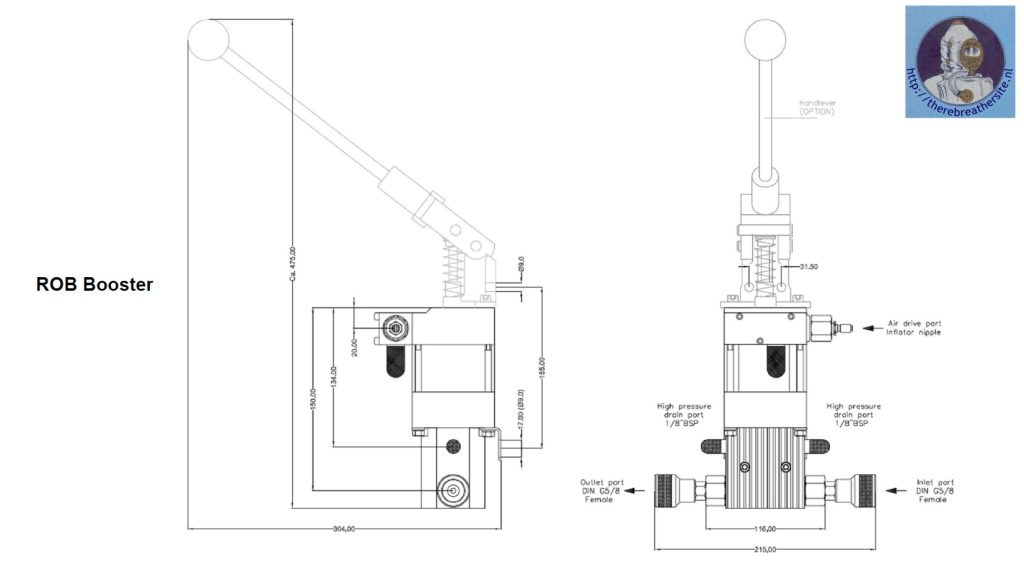
Besides our house brand Maximator, there are a limited number of suppliers in the world. A few very large ones such as Dräger and Haskel are generally fairly well-known. Below is a list of some suppliers.

Therebreathersite was founded by Jan Willem Bech in 1999. After a diving career of many years, he decided to start technical diving in 1999. He immediately noticed that at that time there was almost no website that contained the history of closed breathing systems. The start for the website led to a huge collection that offered about 1,300 pages of information until 2019. In 2019, a fresh start was made with the website now freely available online for everyone. Therebreathersite is a source of information for divers, researchers, technicians and students. I hope you enjoy browsing the content!

